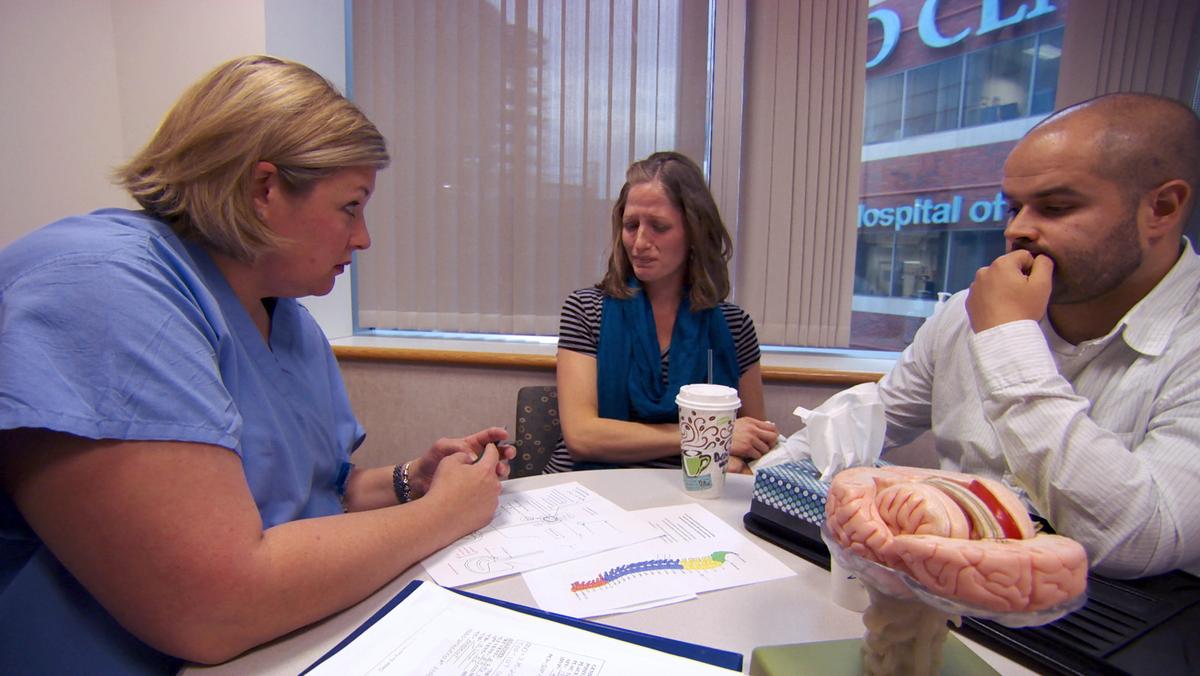Correcting life-threatening birth defects in utero
Listen
(Photo courtesy of the Children's Hospital of Philadelphia)
This month’s PBS mini series “Twice Born,” takes viewers inside an intense surgery unit at the Children’s Hospital of Philadelphia, where doctors operate on babies still inside their mothers’ wombs.
One couple’s story started at their child’s 18-week ultrasound appointment.
“Mostly, we thought we were going to find out if it was a boy or girl and we were very excited,” said Shelly Ross, one of the mothers featured in the documentary, who recently told her story to Pulse Host Maiken Scott. “So it was pretty devastating to find out she had Spina Bifida.”
Shelly and her husband, Bobby, were told at that appointment that their daughter had a very large defect and that there were many complications that would likely stem from it.
“When we initially got the diagnosis, we were told that it was L1 down, which meant probably paralysis, weakness from the waist down, no control of bowel or bladder, 80 percent were more than likely needing a shunt, or intervention into the brain, more than likely needing some help for her feet because they would have been clubbed feet,” said Bobby Ross.
The doctor also told them that there was a chance she had down syndrome.
“It was one of those situations where, as she talked, it just kept getting worse and worse and worse,” said Bobby Ross.
The Ross family was soon told about the option to have their daughter operated on in utero and eventually, decided to pursue it.
“It was terrifying and painful and overwhelming but we just had to take it one day at a time,” said Shelly Ross. “We made it to 36 weeks and six days and Luelle was born. It was incredible to meet our daughter who we had pursued so much for before we had even seen her.”
Shelly and Luelle made it through the surgery and birth just fine and are happy to be celebrating Luelle’s first birthday this year.
“We’re so thankful and [we] don’t take for granted that she’s doing so well because we know that’s not a guarantee,” said Shelly. “She’s crawling and pulling up to a stand and hasn’t needed any major interventions.”
Dr. Scott Adzick, Surgeon-in-Chief at the Center for Fetal Diagnosis and Treatment and a pioneer in this field, says the idea of fetal surgery was first brought up about 30 years ago.
“All of the experimental work derived from the frustration of taking care of newborn babies who had lethal birth defects, where we were too late to do anything,” he said. ” The concept was to do something before birth which, at the time, the skeptics thought there were at least 100 reasons why you couldn’t possibly do that.”
Despite its potential to correct life-threatening birth defects before it’s too late, the operation comes with its risks, challenges and plenty of uncertainty.
“It’s a little bit like driving a car at night on a winding road and it’s pitch black, except for your headlights and you can just see sort of the road a little bit ahead of you,” Dr. Adzick said. “You have to rely on the fact that there’s a road, that your lights work and that you’ll eventually get to your destination.”
The third and final episode of “Twice Born” will air on PBS on Tuesday, April 14. To see the first two episodes, click here.
WHYY is your source for fact-based, in-depth journalism and information. As a nonprofit organization, we rely on financial support from readers like you. Please give today.



